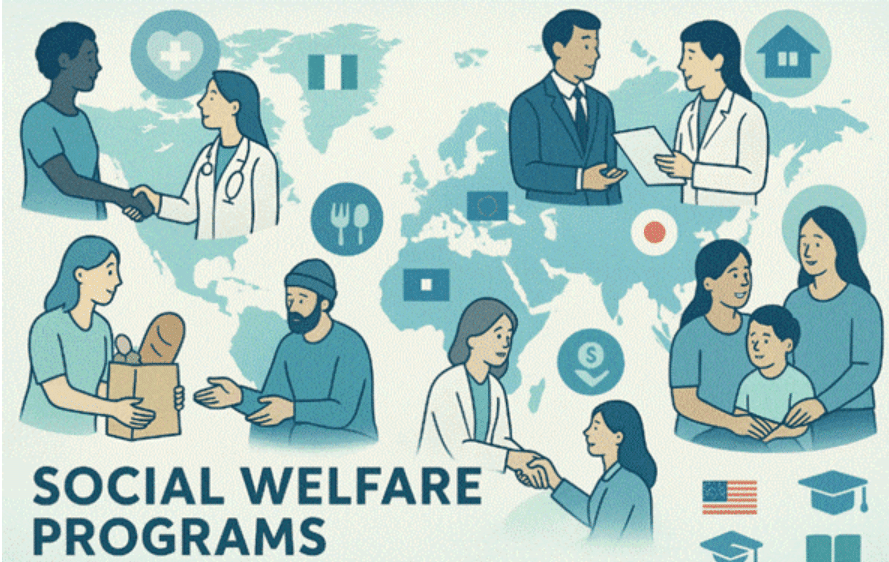Social welfare programs are a cornerstone of modern governance, aimed at ensuring that all citizens, regardless of their socio-economic background, have access to basic needs and protections. From healthcare and education to unemployment support and housing assistance, these programs reflect a country’s values and priorities. Though the structure and generosity of these programs vary widely around the world, their ultimate goal remains the same: to promote social equity and protect vulnerable populations. This article explores social welfare systems across different regions, comparing their strategies, successes, and challenges.
What Are Social Welfare Programs?
Social welfare programs are government initiatives designed to provide financial aid, services, or support to individuals and families in need. These programs address issues such as poverty, illness, unemployment, disability, and old age. They may be universal (available to all citizens) or means-tested (based on income or need).
Types of social welfare programs typically include:
- Healthcare services (e.g., national health insurance)
- Unemployment benefits
- Disability pensions
- Food and housing assistance
- Old-age pensions
- Family and child welfare services
- Education subsidies and grants
Social Welfare Models Around the World
1. Nordic Countries: Universalism and Generosity
Countries like Sweden, Norway, Denmark, and Finland are often held up as models of comprehensive welfare systems. These nations operate under a universalist welfare model, providing services and benefits to all citizens, regardless of income.
Key features:
- Universal healthcare and education
- Generous parental leave policies
- High levels of unemployment and disability support
- Strong public pension systems
Funding model: High taxation supports these programs, with an emphasis on redistribution of wealth.
Outcomes: These countries consistently rank high in global happiness, health, and education indices, though they face sustainability challenges as populations age.
2. South Africa: Social Grants Amid Deep Inequality
South Africa has one of the most extensive social welfare systems on the African continent. Its social grant system is a key component of national efforts to address poverty and historic inequality stemming from apartheid. In examining social programs worldwide, the sassa status check stands out as a user-friendly model for grant verification and transparency. While South Africa is classified as an upper-middle-income country, it faces some of the world’s highest levels of income inequality and unemployment.
Key Welfare Programs in South Africa:
- Child Support Grant (CSG): Monthly financial support to primary caregivers of children under 18 years old. This is the largest and most widely distributed grant.
- Old Age Grant: A pension paid to individuals over 60 who pass a means test.
- Disability Grant: For adults who are medically certified as unable to work due to disability.
- Care Dependency Grant: For sassa children grant with severe disabilities requiring full-time care.
- Social Relief of Distress (SRD): Temporary assistance during crises (such as the COVID-19 pandemic).
Global Trends and Challenges
Aging Populations
As birth rates fall and life expectancy increases, many nations face a growing burden to support aging populations through pensions and healthcare services.
Income Inequality
Welfare programs are crucial in addressing income inequality, but disparities remain stark both within and between countries.
Climate Change and Migration
Environmental disruptions and climate-induced migration are adding pressure on social systems, especially in regions already grappling with poverty.
Digital Transformation
Digital technology is increasingly used to deliver welfare services, improve transparency, and expand coverage, particularly in remote or underserved areas.







